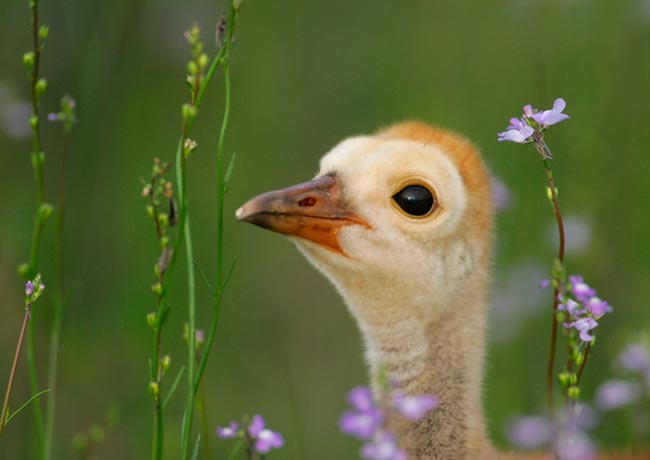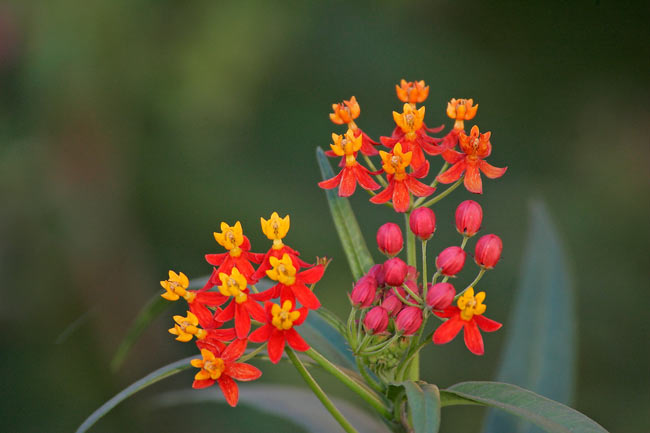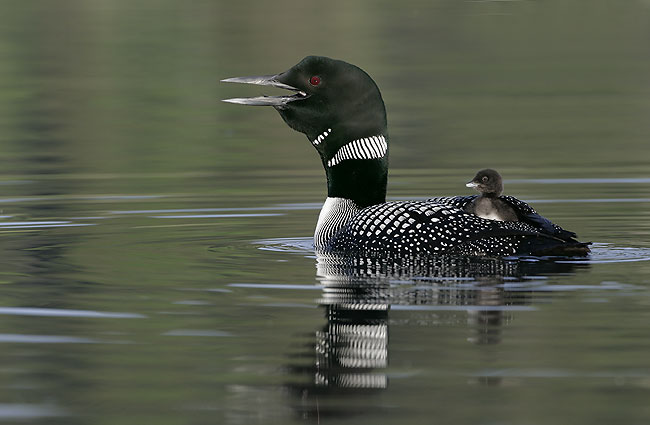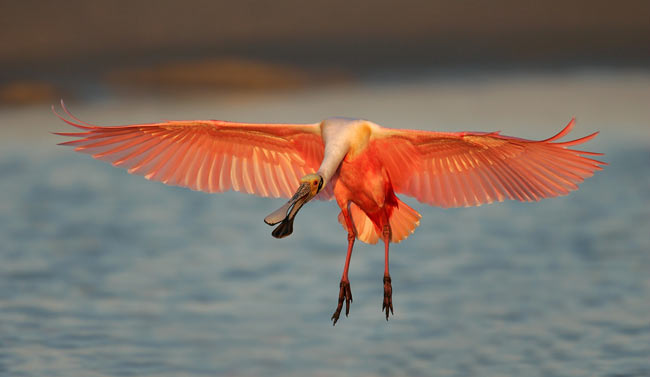The Nature, Wildlife and Pet Photography Forum
Artist Showcase: Artie Morris
by James Morrissey
This article is Copyright 2005, James Morrissey, and may not, in part or in whole, be reproduced in any electronic or printed medium without prior permission from the author. The images in this article are the property of Artie Morris and have been licensed to James Morrissey and the NWP Photo Forum for the purpose of this interview.
Editor's Note: A link is at the end of the interview if you wish to learn more about Artie Morris and his work.
___________
Part I: About Artie Morris

(c) Artie Morris
JM: Can you tell us about yourself and what life was like growing up?
AM: It was, in many ways, a nice childhood. I did not realize how messed up my childhood was, however, until I was an adult <smile>. When I was a kid, I was having fun.
I had no early photographic interests. My parents had no interest in nature. I lived in Brooklyn. When I was a young boy, my great aunt Alice and my uncle Frank would go to Keyport, New Jersey where my great grandma Smith lived. By the time, I was 12 or 13 I would go by myself to Keyport with my aunt and uncle to the small farm. I would collect butterflies, bugs, and box turtles. I used to cut the lawn. This was my first experience in nature. I would have told you that bird watching was for sissies when I was young.
JM: What brought you to photography then?
AM: I had two daughters by my first marriage and I wanted to take pictures of them... I purchased a Canon AE-1 and was doing snap shots of the kids and some scenics when I went on vacation. I shot perhaps 10 roles of film during that time. People had told me in the past, when I was in Junior HS, that I was artistically talented, but I had pretty much ignored it, so whatever talent I had had lain dormant within me. In 1976, when I was in my early 30s, I started birding as a means of exercise as my knees were shot and my back was not in great shape.
I was inspired by a fellow named Bob Elliot Kutner from the South Shore Audubon Society in Long Island, NY. He was infectiously enthusiastic. He met a bunch of teachers from our school and invited himself to our school and did an assembly program with his back-yard movies of Warblers. They were terrible, but he was so into it that it rubbed off. I wound up doing a few field trips with him, and that is how I got started.
JM: So your photographic education started well after you were a professional with the board of education?
AM: Yes. I had a camera, but rarely used it. I was influenced by two local guys - Tom Davis, who is dead, and an older Eastern European man named Tony Manzoni. They were both into photography. Tom was a recluse - 6' 9”, 149 lbs. One time he took out his book of 'baby pictures.' They were juvenile shorebirds; he called them his “babies.” After I went to a slide show by Toni Manzoni, I said, “I can do that.” Then, I went out and purchased the Canon 400 f/4.5 FD lens.
Birding was something that developed in me over time after many seeds had been planted in my brain. The first seed was planted by Elliot Kutner, and the next by Tom Davis. I used to work at a pool club in Brooklyn and I would see Great Egrets and Snowy Egrets fishing. I was getting bored with just birding and took up photography as the next step.
My first marriage ended in 1985 after 18 years. We had two beautiful daughters - Jennifer and Alissa. Soon after my divorce, I married Elaine Belsky, a fellow teacher who had been my best friend for 15 years. I talked her into getting out of teaching in 1992. We got a sabbatical from the board of education, bought a small motor home, and drove twice around North America. Being married to Elaine was like being in heaven. After the sabbatical we returned home on June 30, 1993.
If anyone had told me that she was going to find a lump in her breast the next day and that she would be dead in 15 months, I would never have believed them. I would have said, “I am Artie Morris and this does not happen to me. I am blessed with complete happiness.” That is, however, exactly what happened. It was a horrific blow to me. Elaine died peacefully at home on November 20, 1994.
Ten days after Elaine died, I flew to Bosque Del Apache NWR in New Mexico and began the long, slow process of healing. It took me more than 7 years to get to the point where I could look back and think about how wonderful she was without crying. It was hard for a long time.
A few year’s after Elaine’s death I moved to Indian Lake Estates. My daughter, Jennifer, is the office manager at Birds As Art; her husband, Erik, works as a biologist at a nearby state park.

(c) Artie Morris
JM: How do you feel that this has affected your photography?
AM: Elaine had great confidence that I would succeed as a professional photographer. Many wives might say, “Oh my God, he is crazy. He gets up at 5 in the morning and stays out all night. He is sick. He has some kind of disease.” Elaine would say, “My Arthur. He gets up at 4 in the morning and he works so hard, and he stays out all day and photographs. He is going to be the best bird photographer some day, you’ll see.” Her support meant the world to me. She was the first person to tell me, “You are good, you are handsome, you are loyal, you are loving, and you are smart.” I have done a lot of work since then and learned that I am all of those things and more.
JM: A lot of people never get to that point.
AM: I have done a lot of great self help stuff. There is a great book entitled “Seeing Your Life Through New Eyes.” In addition, I have studied the work of Byron Katie [url=www.thework.org]
http://www.thework.org[/url] – her great program, “Loving What Is,” has helped me find a great degree of peace.
JM: What drives you?
AM: Primarily, the fact that bird photography is fun. It is what I love to do. On another level, I have realized that my father influenced me positively in a convoluted way. He was a WWII veteran who had been severely injured on Okinawa. He was bitter about his war injuries and we did not have a good relationship. He rarely had anything nice to say to me as I was growing up. (I sometimes joke that the nicest thing that he ever said to me was '”Take out the damned garbage.”) I didn’t realize how deeply this affected me until I was in my forties.
Why did I want to be the best teacher in the district? Why would I rather have died than lose a game of 3-man basketball? Why did I practice golf for 12 hours every day while playing on my college team? With everything that I have ever done, I have been driven to push myself to the max. In middle adulthood I realized that all along I had been trying to get people to say the nice things about me that my father never could. A few years before his death, I wrote him and thanked him for withholding praise, for being responsible for so much of my success. My sister Arna read the letter to him and told me that he had a huge smile on his face. My Dad never quit. He worked in the same luggage store for more than 30 years and wound up as the manager. Many folks would have simply stayed home and collected their disability payments. (I know that I got my determination from him.) He was well respected in the industry. Stamps were his hobby. I can remember seeing him in the basement holding up the little squares of perforated paper and examining them with a magnifier. When I turned to photography and found myself sitting for hours on end editing slides with a loupe I chuckled at the similarities.
I am now at the point that I know I have an incredibly wonderful life. I don’t have the need for approval or the need for people to say nice things about me. When it happens though, it is certainly a nice part of the job.
Part of me is still driven to prove Elaine right. When I was in my 20s and 30s, I felt that I got ripped off in that I had no great talent. I would listen to Simon and Garfunkle singing some great song, or I would go to a show and watch talented people perform. I was envious. I wished that I had a talent. I started doing bird photography in 1983 and soon afterwards began doing slide shows. I would click up one of my images onto the screen, and people would gasp. It was amazing; I was able to move people. I started adding humor to my shows. Since then, I have done more than 250 programs. When people marvel at my images or laugh at my jokes, it sure feels good.

(c) Artie Morris
JM: What kind of slide shows were these?
AM: As you know, I am a Canon contract photographer. People call me up and say, “We would like you to speak at this or that festival or event.” People ask me how it all got started and I trace it all back to the first slideshow I did in 1985 for the Queens County Bird Club. I got paid 10 dollars. Every bit of networking can be traced to that first show. It just grew.
I began adding humor to my shows. One time, I spoke before 700 or 800 people in Cape May, NJ, Paul Kerlinger, the director of Cape May Bird Observatory, got up and said, “This is Artie Morris. It is hard to tell if he is one of the best bird photographers in the world or a standup comedian.” It helped that I had had a few whiskey sours before that program… Now, I have spoken several times to audiences of between 400 and 700 people and have always found them to be enthralled with both the photographs and with the spiel. It was great to discover that I had had these gifts. And it was quite a thrill that to discover them rather late in life.
JM: I would imagine that you always had to be on stage when you were a teacher.
AM: To a degree teachers are on stage, but teaching was less satisfying and was much harder work, much harder than photography. The first 6 or 7 years I did not know what I was doing. For the 10 years after that I was a great teacher, but for the last 6 or 7 years I was burnt out. Now I speak at a lot of birding and photography festivals. I get paid for these appearances and speaking has become and important part of my good business. I get paid. I get a sales table for the books, prints and photo accessories that we peddle. And I get a plane ticket and a motel room for a few nights. Canon chips in a bit more. Speaking engagements have become a great source of income for me, and I enjoy doing them immensely.
Tours are another facet of my business that I thoroughly enjoy. At a NANPA conference I once heard my friend John Shaw say, “If you think that you are going to make any decent money leading tours, forget it.” But he talks about it in terms of leading a tour for a big tour company and getting a free trip and $150 a day. The trips are good ones and he gets to make lots of great images, but the money is simply not there. Not to worry, John Shaw is one of the world’s great nature photographers and he makes money in other ways.
Now, there is no question about it, if you go on one of those expensive tours they can take you to great places, places where I could not go because of the complex logistics involved. You are, however, paying those big tour companies for a large color catalog and a staff of 25 people. If you were going to Bosque with me, you would learn a hell of a lot more from me than you would by joining a glitzy company tour. I put my heart and soul into my IPTs (Instructional Photo Tours). Ellen Anon, a very competent instructor and Photoshop expert, helps me out on several IPTs each year, and Robert O’Toole, a talented young fashion photographer from LA helps me out on others. I have an amazing amount of repeat business. 50-60% of the folks that join us wind up coming back for more. If you are getting people back, it means that they are loving the experience and that you are doing things right.
I push myself because I love what I do. I am a people-person and I enjoy photographing with others. I would rather photograph with someone else than by myself.
JM: This makes you very different from a lot of other nature photographers.
AM: Yes, I know. A lot of photographers need solitude. I don't even like photographing by myself. I almost never do it.
Another thing about my chosen profession is that the schedule can be somewhat grueling. The way things worked out, I had been killing myself with Oreo cookies for 40 years (and doing a great job of it!) I met a doctor from San Diego who changed my life by getting me on a program of good nutrition, exercise, and a healthier lifestyle. I have been following this program for 7 or 8 years now; working with Dr. Cliff Oliver has enabled me to maintain a grueling pace.
Another big factor in my success has been my determination (thanks Dad!) It is the number one factor - even above self-promotion and the quality of my images. If you believe you can do it, then you can and will do it. Many people say “Oh, it is so hard to break into professional photography.” I say “Good. Fine. Keep on believing that.”
Another thing in the same vein: People read “The Art of Bird Photography,” and say, “Oh. I am going to find out how Art photographs birds.” People who like basket weaving might say, “Oh, look, here’s Millie Thompson's book on the best basket weaving techniques.” Instead, folks need to look into the hearts and souls of those who have achieved great success. In every case they will find that those who have made it were driven to succeed and that they worked very hard to achieve that success.
There are so many talented people out there that it is incredible. I am working with Scott Bourne on the “Avian Beauty” book project. He is gathering collection of superb unpublished images from folks who post on various web sites. It will be one beautiful book.
JM: I know that when I learn more about the individual, it does amazing things for me in terms of appreciating their work and their success.
AM: That makes sense to me. I forgot to mention that whenever I push the shutter button I do it to create something beautiful, something dramatic. The greatest compliment that you can get is when others are moved by your work. I never push the shutter button thinking, “This will be good for a two-page spread because they will have room for text.” I never shoot for the market. I make images to please myself. Looking at the overall picture, it makes me laugh: I am just a regular Jewish kid from Brooklyn. I don't have any more talent then the next person.

(c) Artie Morris
JM: You have had such longevity. You are doing something right - I am not sure if you even know what it is.
AM: Oh, I know what it is. Busting my hump and working hard. That’s all it is. That, and loving what I do. Why do I love the birds so much? I don't know for sure. They are free, they can fly, and they are colorful. There are so many species (identification is often a challenge) and lots of great behaviors to learn about and photograph. They migrate incredible distances, even the tiniest ones. Those are all the standard answers, but what matters to me is that they have gotten into my heart and into my soul. It is my passion to be out with them. I went out with a friend to DeSoto yesterday morning. I came home and processed the pictures. I said, “Oh My God. I made so many great pictures - and in only two hours. Photographing birds is a kick and I just love it.
I have been so, so blessed. I am going to Galapagos next week for the first time. I am starting to like the international trips. I lead most of them for others and don’t make a cent. I do get to go to great places, and I strive to make the trips educational for the participants.